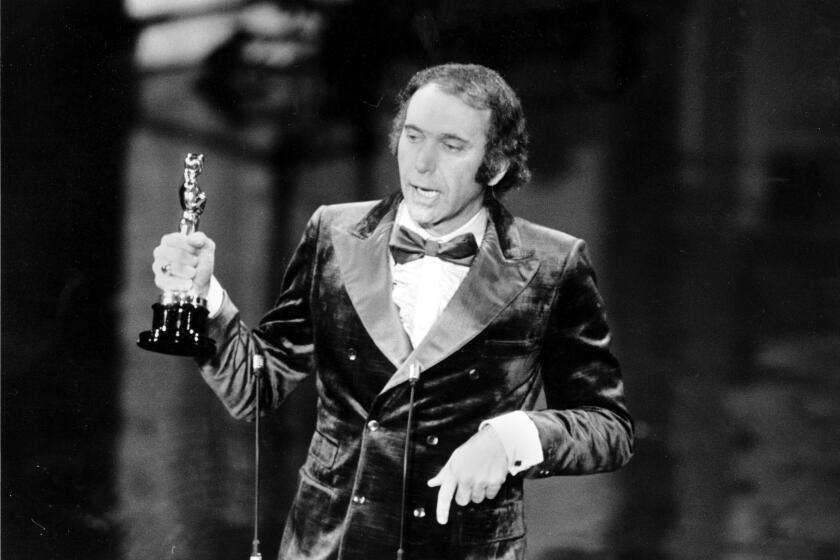New Award Puts Quality in Limelight
Actors have the Oscar. Writers have the Pulitzer. Musicians have the Grammy. But who honors the companies that strive, year after year, for superior standards?
On Monday, U.S. industrialists will have their prize too: the Malcolm Baldrige National Quality Award.
“A lot of companies say, ‘Quality is our middle name,’ ” observed Curt W. Reimann, director of the award program that is named for the U.S. secretary of commerce who died in a rodeo accident last year.
“What we’re getting at is: How do you know what your quality is? Do you monitor it? What can you show us about the progress you’re making?”
Such questions get to the heart of America’s competitive struggles with Japan and other nations that have made economic strides in the 1980s by selling quality merchandise. Mindful of their achievements, Congress established the national prize last year to encourage quality awareness in American industry.
The first winners are scheduled to get their gold-plated awards from President Reagan on Monday at a ceremony in the East Room of the White House.
“It’s not a beauty contest in any sense of the word,” declared Mat Heyman, a spokesman at the National Institute of Standards and Technology, a government agency formerly known as the National Bureau of Standards. “In order to apply, you have to jump through some hoops.”
The hoops begin with an application that focuses on a company’s overall commitment to excellence, not simply whether it makes a reliable product. The contest sets forth no succinct definition of quality. Rather, it asks companies to explain 62 separate aspects of their quality efforts, including internal processes that the consumer would never notice.
‘Awareness Not Enough’
Organizers say the very act of applying is helpful, because it forces managers to take a fresh look at the way they do things.
Despite such laudable goals, however, some ask what sort of benefits a prize can bring, particularly if it goes to companies that could do vastly more to improve themselves. Among the questioners is W. Edwards Deming, the pioneering U.S. authority on quality--for whom the Japanese named their own prestigious quality award.
In a telephone interview from his home in Washington, Deming, 88, acknowledged the good intentions behind the U.S. award but warned that promoting an awareness of quality is not enough. “It’ll take more than consciousness” to improve American industry, he said. “Quality starts at the top.”
If success in the marketplace is quality’s ultimate award, many U.S. firms may be missing out. According to a Gallup poll in October, 21% of Americans believe that foreign-made products are superior to those made in this country. Although two-thirds of the public take the opposite view, Americans seem to have low expectations: Just 48% of respondents gave U.S. products high marks for quality--down slightly from 51% in 1985.
Moreover, “The strongest support for American-made products comes from older, poorer and less-educated groups,” according to the survey, which was commissioned by the American Society for Quality Control.
Advocates of the new prize see it as a way to improve both the perception and reality of American products. They promise that the judges will stick to top standards, because they have discretion to award no prizes at all. This year there will be five winners, Heyman said, although contest rules allow up to six--two from big manufacturing companies, two from big service firms, and two from small businesses.
“I think we have the kind of people judging the program that are capable of setting a high standard,” said Reimann, who also serves as an official of the National Institute of Standards and Technology. The judges are quality experts, selected from the private sector and academic world, he explained.
13 Field Inspections
The entire project represents an unusual public-private effort to spur U.S. competitiveness in the tough global marketplace. Private donations have approached $9 million and add to an endowment that pays for publicity, training of judges, materials and other costs. The effort is jointly run by the U.S. standards institute and two private groups, the American Society for Quality Control and the American Productivity and Quality Center.
“Winning this award--even the fact that we’re a finalist--is something we can promote to show the public we have quality products,” said Henry S. Ruppel, manager of economic and financial communications at Goodyear Tire & Rubber, which was one of just 13 companies selected for a field inspection by the judges.
To apply, companies documented up to 75 pages worth of quality improvement efforts, ranging from the role of top executives to how they get the best out of their work forces. Only companies approved by a three-member panel, a senior examiner and--ultimately--a group of nine judges, were approved for in-depth site visits.
In fact, the procedure was so daunting that many companies shied away, at least in the contest’s debut year. Of about 10,000 award applications distributed, only 66 were filled out and sent back.
“We just didn’t feel like we could prepare an appropriate application in that length of time,” explained Terri West, a spokeswoman for Texas Instruments. “But we do fully intend to apply in the future.”
During the three-day site visits, judges interviewed many employees and looked for evidence to back up claims on an application.
If a company highlighted its focus on customer needs, “in the site visit, we might say, ‘We’d like to see the specifics of how you measure customer satisfaction,’ ” said John E. Condon, a senior examiner who visited three big manufacturing firms.
Condon, a retired vice president of quality for Abbott Laboratories in Chicago, added that examiners tried to keep companies from getting too nervous during the inspections. “We’re not there to do an audit,” he said.
Indeed, some companies took the competition very seriously. “We were the first company in the country where there was a site examination,” recalled Mead D’Amore, general manager of the commercial nuclear fuel division at Westinghouse in Pittsburgh. “I’m kind of proud of that.” (Finalists were not identified by contest sponsors, but Goodyear and Westinghouse acknowledged their participation.)
Progress, Goals Examined
During the Westinghouse visit, examiners spoke to hundreds of employees and even some customers, traveling from the Pittsburgh headquarters to facilities in Blairsville, Pa., and Columbia, S.C., he said.
“You can’t bluff your way through this exam,” D’Amore said. “You need a good, solid quality improvement program that’s shown improvement over the years. They look at where you come from and where you’re going.”
Yet if D’Amore and other applicants were impressed by the demanding process, much of American industry stood on the sidelines in the first national quality contest.
Summing up the first-year experience, Reimann wrote, “Quality awareness is lacking. Many of the inquiries about the award during the first year reflect a lack of understanding of the meaning and importance of quality. In addition, many organizations which should be actively promoting quality improvement showed little interest in encouraging applicants.”
But to true believers, the outlook is not gloomy. Award organizers said they expect participation to grow as companies become more familiar with the program--and more aware of the stakes in the larger, global contest over quality.
“I think it’s an award that will become extremely sought-after and very prestigious,” predicted Condon. “We’ll hear much more about it in the future.”
PUTTING A PRICE TAG ON QUALITY In the 1988 American Society for Quality Control/Gallup Survey, consumers were given a baseline price for certain average-quality items and asked the premium they were willing to pay for a high-quality product.
Baseline price Price for Difference Item for average item quality item in percent Automobile $12,000 $14,518 21% Television $300 $501 67% Dishwasher $400 $567 42% Sofa $500 $862 72% Pair of shoes $30 $50 67%
Source: ASQC/Gallup survey
More to Read
The biggest entertainment stories
Get our big stories about Hollywood, film, television, music, arts, culture and more right in your inbox as soon as they publish.
You may occasionally receive promotional content from the Los Angeles Times.






